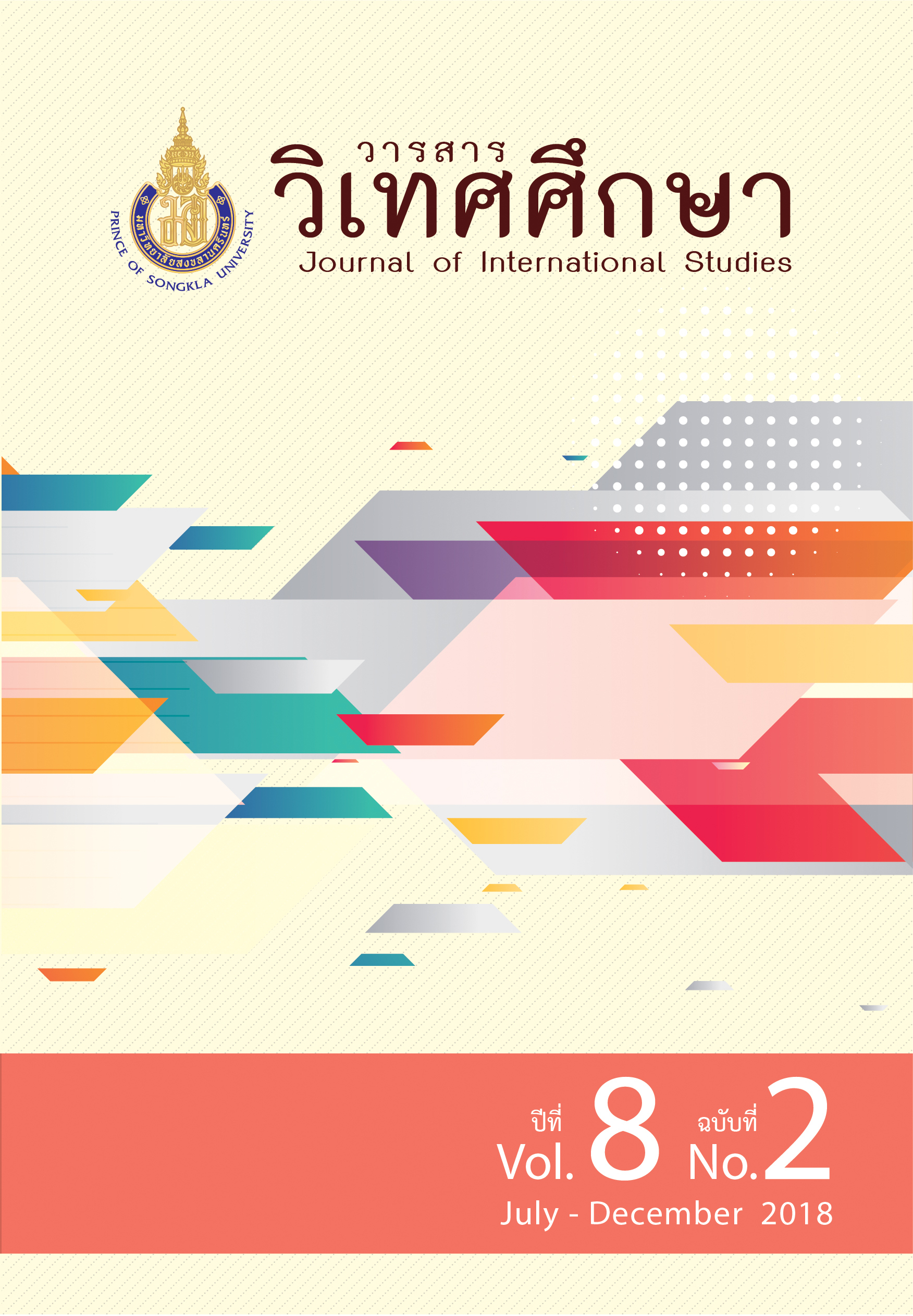Cultural Preservation of Mahayana Buddhism Identity in the Dimension of Chinese Shrines: Case Studies of Muang Phuket District, Phuket Province
Main Article Content
Abstract
The research purposed to indicate the identity and cultural preservation of Mahayana Buddhism in Chinese Shrines in Muang Phuket District, Phuket Province. A qualitative approach was used to analyze the social phenomena of the study by using participant and non-participant observation, as well as an in-depth interview. The identity of Mahayana Buddhism in Chinese shrines repre-sented the Chinese ethnicity such as Chinese style deities, Chinese poem decoration, Chinese auspi-cious words, Chinese Buddhist doctrines, Chinese arts, and teaching of Chinese deities such as Kuan Im Bodhisattvas and Jigong Arahants. There were also various social activities aiming at the maintain-ing of Mahayana Buddhism as well as inheriting Chinese ethnicity such as praying Mahayana Buddhism Mantras (Songkeng), classes for teaching Mahayana Buddhist Mantras and prayers, rituals containing Mahayana Buddhist identities as well as annual traditions. Every social activity of the Chinese shrines was supported by bilateral govern-mental organization and private sectors represent-ing the social solidarity to Phuket Hokkien Culture inheritance.
Article Details
Statements and opinions expressed in articles herein are those of the authors and do not necessarily reflect the position of the editors or publisher.
Article, information, text, image, etc. which are published in Journal of International Studies, belong to Journal of International Studies. If anybody or any organization would like to use part or whole of them, they must receive written permission from Journal of International Studies before usage.
References
Chanasakun. P. (2017). Double identity representation of Chinese shrine in Phuket district. Journal of International Studies, Prince of Songkla University, 7(1), 179-196.
Chansatatham, K. (2007). Management of Jui-tui Tau-Bo-Keng Shrine. Master’s degree dissertation, Prince of Songkla University.
Chantawanitch, S. (2016). Sampeng: History of Chinese community in Bangkok. Bangkok: Chulalongkorn University Press.
Cohen, A. (1976). Two dimensional men. California, USA: University of California Press.
Dachwilai, W. & Krutchon T. (2014). The role of local government to encourage Fujian identity transmission in Phuket province. Journal of International Studies, Prince of Songkla University, 4(2), 1-34.
Euamornvanich, P. (2017). Communication through Multi-Cultural Dimensions of Geert Hofstede. Journal of Humanity and Social Sciences, Burapha University, 25(47).
Geertz, C. (1973). The interpretation of cultures (Vol. 5019). Basic books.
Geertz, C. (1973). The interpretation of cultures (Vol. 5019). Basic books.
Hall, S. (1990). Cultural identity and diaspora. In Diaspora and visual culture (pp. 35-47). Routledge.
Hobsbawm, E., & Ranger, T. (Eds.). (2012). The invention of tradition. Cambridge University Press.
Kasetsiri, C. (2016). China. Samutprakan, Thailand: Toyota Thailand Foundation.
Kataoka, T. (2012). Religion as non-religion: The place of Chinese temples in Phuket, southern Thailand. Southeast Asian Studies, Kyoto University, 1(3), 461-485.
Keawborisut. S. (2012). Hat Yai vegetarian festival: Invented space for tourism. Master’s degree thesis, Prince of Songkla University.
Landaw, J. & Bodian, S. (2011). Buddhism for Dummies. Foster City, US: John Wiley & Sons Inc.
Layton, R. (1997). An introduction to theory in anthropology. Cambridge University Press.
Manomaivibool, P. (2011). Chinese communities in Thailand: Variety of Chinese dialects. The Journal of the Royal Institute of Thailand, 36(4), 539-552.
Ming, K. (1985). Popular Deities in Chinese Buddhism. Retrieved from http://www.buddhanet.net/pdf_file/ancientsgrfx.pdf
Panuwattanakul, W. & Yimlamai, S. (2010). Identities of Chinese-Thai People in Hat Yai.
Pattamacharoen, R. (2011). Roles of the Chinese shrine in maintaining Chinese identity: A study in Amphoe Muang Nakorn Pathom province. Master’s degree thesis. Chulalongkorn University.
Phoprasitsat, A. (2008). Mahayana Buddhism. Bangkok: Chulalongkorn University Press.
Phuket Information Center. (2018). Angyee of Phuket. Retrieved from http://www.phuketcity.info/default.asp?content=contentdetail&id=14109
Pinpradab, C. (n.d.). Chinese and Chinese Thai people in Phuket.
Pongsapich, A. (2016). Special Article: The Royal Project: Interface between Government and Public Sector. Journal of Social Research, 39(2).
Praphanturakit, S. (2008). Entertainment media and the relationship between Thailand and Laos: A construction of Lao identity in the film “Lucky Loser”. Doctorial dissertation, Faculty of Political Science, Thammasat University. Retrieved from http://digi.library.tu.ac.th/thesis/po/0595/
Pumiputavorn, R. (2007). Phuket. Phuket, Thailand: Phuket Bulletin Company Limited.
Rintaisong, I. (2005). Structural Functional Theory, coursebook for social science search, Faculty of Education, Thaksin University. Retrieved from https://goo.gl/UWSVjT
Rodney, W. (1972). How Europe underdeveloped Africa. London, UK: Bogle-L'Ouverture Publications.
Royal Anthropological Institute. (2018). What is Anthropology. Retrieved from https://www.discoveranthropology.org.uk/about-anthropology/what-is-anthropology.html
Schirokaver, C., Brown, M., Lurie, D. & Gay, S. (2013). A brief history of Chinese and Japanese civilizations. Boston, US: Wadworth.
Schumacher, M. (2013). Overview: History & timeline of Buddhism’s spread. Retrieved from http://www.onmarkproductions.com/html/schools-three-vehicles.shtml
Skinner, W. G. (1957). Chinese Society in Thailand: An analytical history. Ithaca, New York: Cornell University, Press.
______. (1959). Overseas Chinese in Southeast Asia. The Annals of the American Academy of Political and Social Science, 321(1), 136-147.
Turner, V. W. (1967). The forest of symbols: Aspects of Ndembu ritual (Vol. 101). Cornell University Press.
Turner, V. W. (1967). The forest of symbols: Aspects of Ndembu ritual (Vol. 101). Cornell University Press.
Wiwatthananukul, M. (2016). Intercultural communication. Bangkok: Chulalongkorn University Press.


